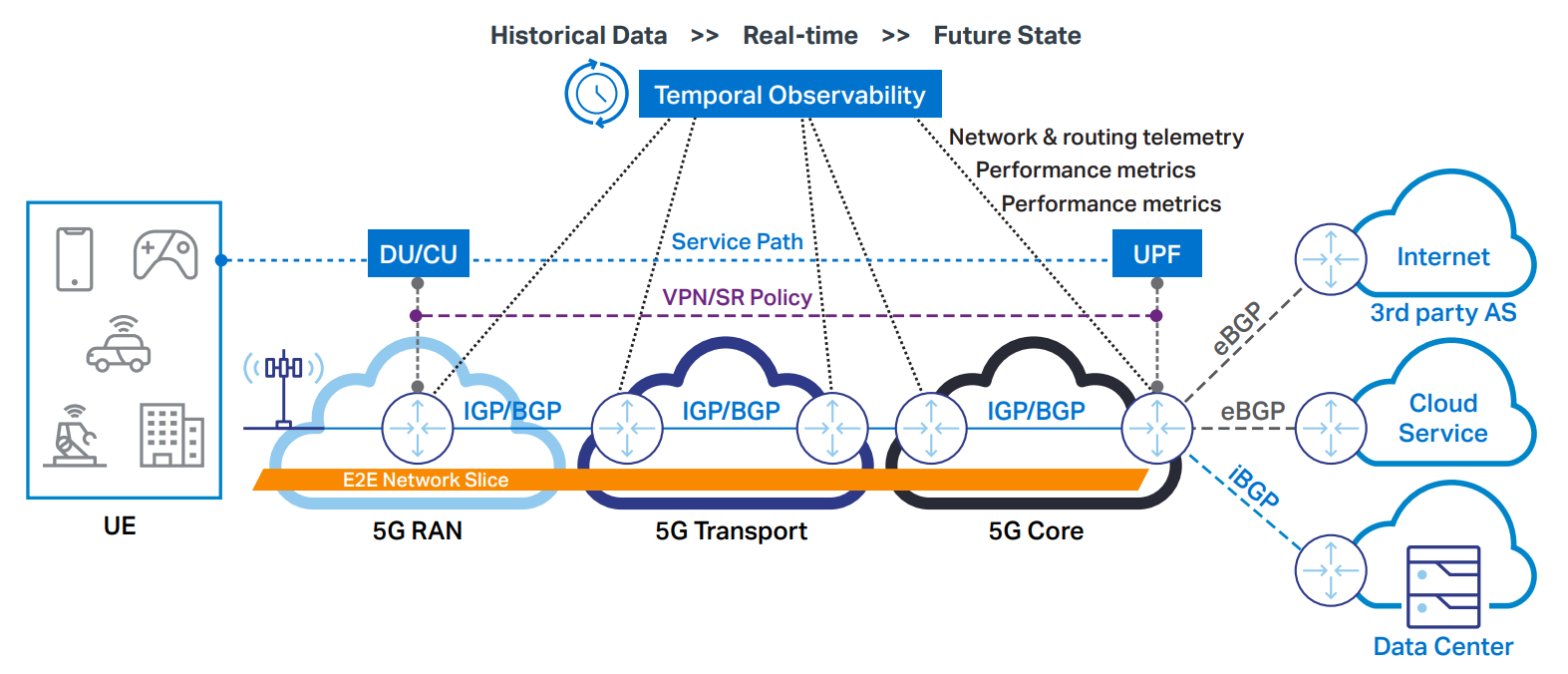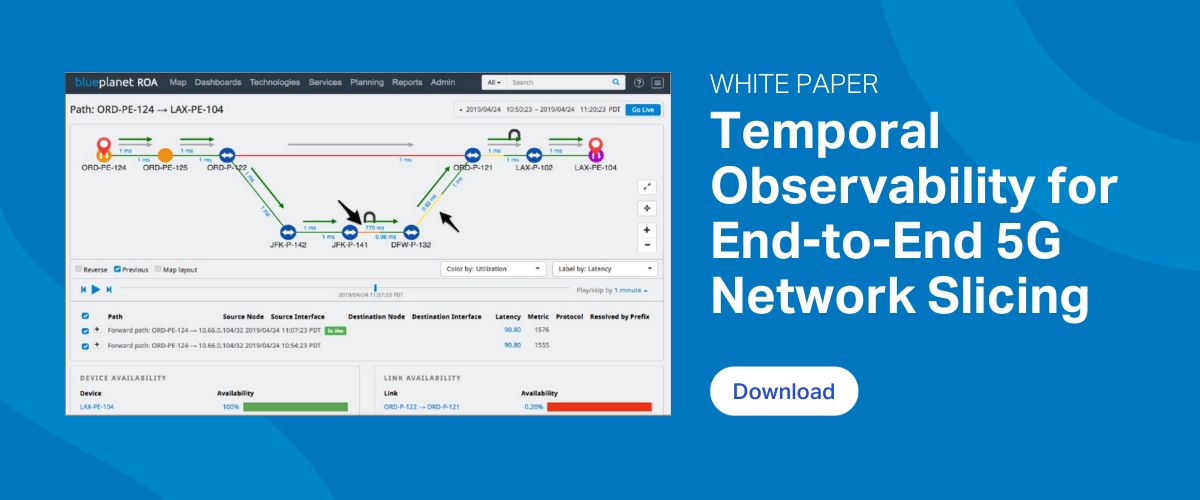Temporal Observability brings new insights for 5G
The viability of future 5G services hinges on the ability to activate, monitor, and assure thousands of network slices in real-time. Blue Planet’s Bill Kaufmann details how a new kind of network monitoring – Temporal Observability – provides the foundation upon which dynamic 5G network slices can be built.
As 5G approaches 1 billion subscribers worldwide, communication service providers (CSPs) are more focused than ever on monetizing their 5G investments.
Successful monetization depends on dynamic network slicing to deliver highly differentiated 5G services, yet operationalizing dynamic slicing while meeting service constraints and SLA specifications is complex.
Many network teams are involved in building these services, from network architects and planners to network engineers and NOC teams. To connect a slice from the RAN edge to the cloud core will require awareness of the 5G network topology, underlying resources, and how services cross the network. Dynamic slicing and slice automation necessitate a level of observability for 5G that includes historical, real-time, and future-time perspectives.
Traditional monitoring systems will fall short in dynamic 5G networks. These systems often cannot track the performance of end-to-end slices. They will struggle to correlate network performance across technology domains or multiple autonomous systems. They do not deliver insights into dynamically shifting routing paths, or metrics specific to traffic engineering protocols such as Segment Routing, SRv6, and Flex Algo – all being adopted worldwide for slice transport.
The network monitoring conundrum
5G Non-Standalone networks are built on 4G hierarchical architectures with well-defined network edges, static resources, and deterministic routing paths. When a service fails, NOC engineers correlate the root cause to underlying network equipment. Traditional monitoring systems work well in this legacy architecture, delivering insights into the current state of the network, reports on performance metrics, and alerts as problems occur.
 5G is built differently. 5G networks are designed for the cloud, leveraging cloud native functions with software-defined networking for control plane management. An end-to-end 5G slice spans multiple technology domains, multiple Autonomous Systems (AS), and multiple provider domains to take advantage of hyperscaler cloud infrastructure.
5G is built differently. 5G networks are designed for the cloud, leveraging cloud native functions with software-defined networking for control plane management. An end-to-end 5G slice spans multiple technology domains, multiple Autonomous Systems (AS), and multiple provider domains to take advantage of hyperscaler cloud infrastructure.
Distributed architecture brings diverse communication paths. 5G transport runs over traffic-engineered IP/MPLS paths to provide performance guarantees. The result is a 5G network with dynamic network slices running on routing paths that shift to meet slice constraints. The ability to understand how traffic flows shift over time will differentiate those CSPs that can meet their service contracts, and those who cannot.
Traditional monitoring systems will fall short in dynamic 5G networks. These systems often cannot track the performance of end-to-end slices. They will struggle to correlate network performance across technology domains or multiple autonomous systems. They do not deliver insights into dynamically shifting routing paths, or metrics specific to traffic engineering protocols such as Segment Routing, SRv6, and Flex Algo – all being adopted worldwide for slice transport.
Defining Temporal Observability
Network observability refers to the capacity to collect and analyze vast volumes of network monitoring data to understand performance in the context of services or user experience.
Temporal observability builds on this concept by taking into account variations over time for network performance, SLA metrics, and traffic flows. Telemetry data is analyzed, correlated, and presented in the context of a 5G network slice or end-to-end service. A historical perspective reflects past customer performance during traffic surges or degradation. A current perspective enables response to real-time variations. Planning scenarios and machine learning-based predictions indicate the future state around which CSPs must design new expansions.
A temporal understanding is critical in 5G networks where SDN-based traffic engineering will dynamically shift communication paths based on instantaneous performance demands.
Temporal observability from tower to cloud
Understanding of past, present, and future traffic flows helps to quickly triage which link in which domain requires attention to deliver the required slice latency or throughput. As IP networks and disaggregated RAN push further to the edge, backhaul and midhaul pathing becomes dynamic.
Contextual data holds the state of network and routing events over time, delivering a clear view of how network routing behaved when a service was disrupted during transient events in the past. An observability system with advanced analytics leverages knowledge of past events to simulate potential changes and determine how the network would react.
Setting the path to 5G automation
Successful delivery of differentiated 5G services requires automation for speed, scale, and agility. Efficient automation of path computation and provisioning relies on correlated, time-variable views of the network topology, routing paths, and network performance – all reflected here in the concept of temporal observability.
Blue Planet’s network assurance portfolio, with its understanding of the entire IP routing stack as well as RAN to core network monitoring, is deployed today, delivering temporal observability for leading CSPs worldwide to manage their dynamic networks and services more efficiently, and accelerate their journey to 5G automation and monetization.


